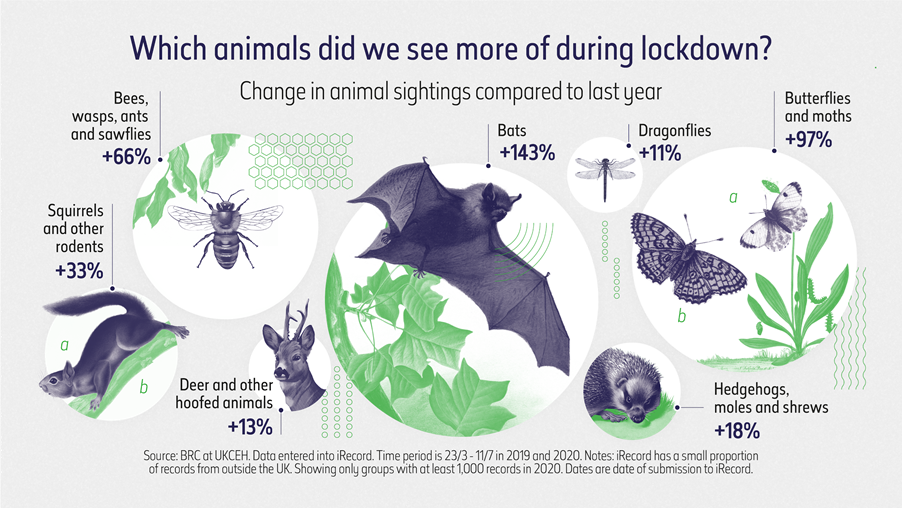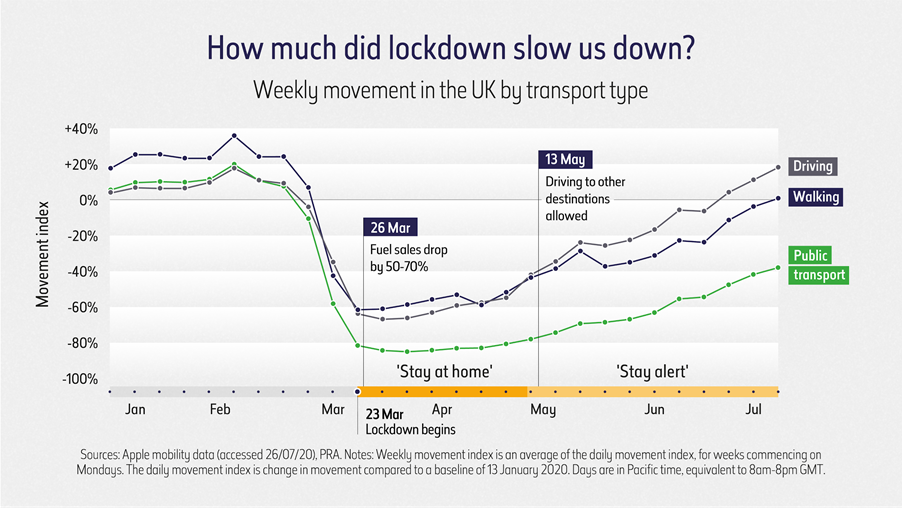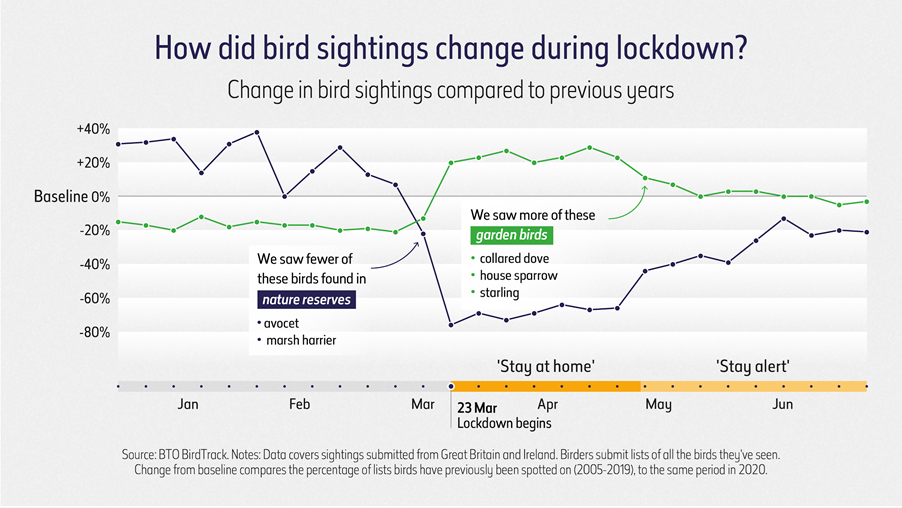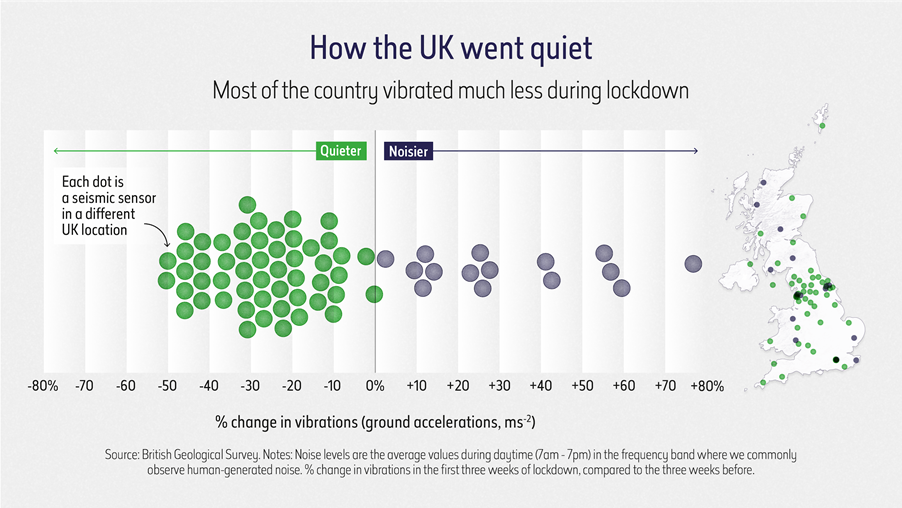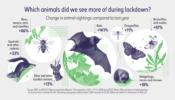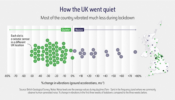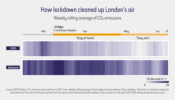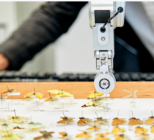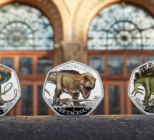Part of Nature in Lockdown, a public engagement initiative through which Natural History Museum aims to crowdsource research ideas and discover the three environmental impacts of Covid-19 that most interest the public, the graphics cover topics including animal sightings, pollution levels and the movement of people.
“These fascinating visualisations, the result of a collaboration between scientists, our digital teams and Beyond Words, bring to life some of the astonishing impacts lockdown has had on our environments and how we noticed and experienced nature in a new and different way,” says Clare Matterson, executive director of engagement at the Natural History Museum.
“Data visualisation is a powerful tool for getting to the heart of what’s happening,” notes Duncan Swain, partner and creative director at Beyond Words. “Collaborating with the Natural History Museum and their partners gave us a unique opportunity to show just how powerful an effect the pandemic has had on the world around us. The results, I think, have opened our eyes to otherwise unseen consequences.”
What did lockdown change?
Animal sightings
In the first 100 days of lockdown there were nearly half a million wildlife sightings submitted to wildlife spotting website iRecord, an increase of 54% compared to the same period last year. Bat sightings increased by 2.4 times compared to the same time last year, while the most frequently spotted lockdown animals were butterflies (129,000 sightings) and moths (90,000 sightings).
Sightings of our garden birds – house sparrow, starling and collared dove – also increased but sightings of birds that thrive in wetlands, such as avocets and marsh harriers, plummeted.
Air quality and noise pollution
Lockdown and the dramatic decline in journeys across London led to the city’s air becoming markedly cleaner. CO2 emissions, as measured from the capital’s BT Tower, fell 60% versus a 2011-2019 baseline.
Seismologists measuring the UK’s vibrations to monitor sound levels detected up to a 50% drop in the first three weeks of lockdown. As animals of all kinds are acutely sensitive to noise pollution – affecting behaviour, stress and even growth – the decrease was good news for the natural world.
Transport changes
Across the UK public transport journeys dropped 82% in the first month of lockdown with overall traffic hitting its lowest point on 12th April.
The project, which has received funding from the Natural Environment Research Council, culminates in a live interactive virtual event this Friday at 7.30pm. Online audiences will be able to pose questions to emerging researchers about the topics explored in the infographics.
To find out more about the collaborative project, visit www.nhm.ac.uk/discover/nature-liberated-by-lockdown.html



